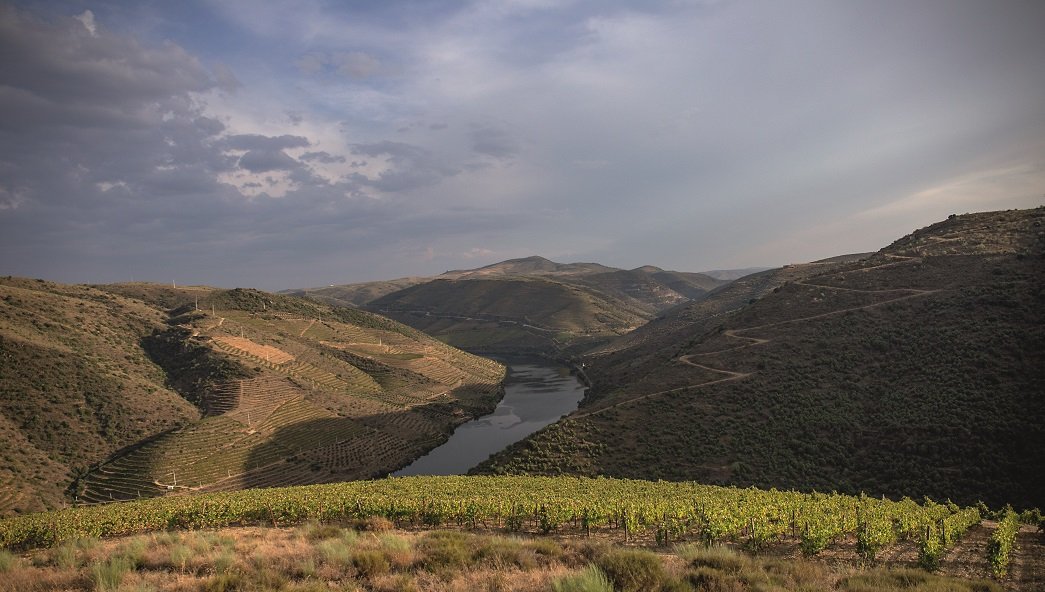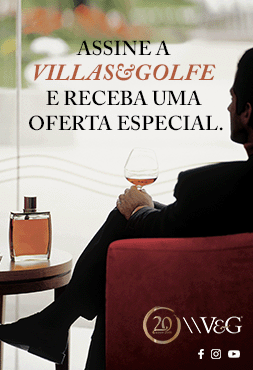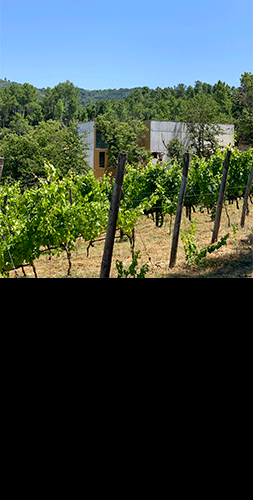
When João Nicolau de Almeida – creator of the wine Duas Quintas – decided to invest in a project in the Douro, in Vila Nova de Foz Côa. From the outset he imagined the challenge that lay ahead of him. When he arrived at the site of the property, which is now called Quinta do Monte Xisto, there was nothing, just wilderness, and perfect views over the River Douro. We’re talking about a place where the magic of time dares to pass through the peace and calm of the valleys. And during our visit, we were entirely won over by the charms of the superb landscapes of the Douro. It’s all so calm. So vibrant. So silent, that only the noise of our conversations at the table, while enjoying the pleasant dinner, lovingly prepared by Mafalda, Joao Nicolau’s daughter, was able to disturb the local soundscape. But far away, sensing the waters heading down the river, we carefully listened to the humming of the ‘natural beings’ of this region.
João, there was nothing in the territory where Quinta do Monte Xisto now stands, right?
Historically, in the Upper Douro Sub-Region, no. We have Baixo Corvo, Cima Corvo, Régua, the area of Pinhão (with that most classic of Douro landscapes, with terraces, estates...), and, then, from São João da Pesqueira to Spain, this is the Upper Douro, which was the last area to enter, in the 20th century, the Douro Demarcated Region. This area here is a different situation. The people here, for example, can get to Coimbra quicker that they can to Oporto. Ervamoira was one of the first estates, apart from Dona Antónia, to exist here, as there was practically nothing.
Almost nothing?
People had wine, but it was for their own consumption. From 2000 onwards more began to be planted here. Before this was a mixture of olive, almond and cereal. In Ervamoira, for example, was all cereal.
And what was the year when you found this magnificent place?
In 1994, unless I’m mistaken.
«When I was small, I would either go to the grape harvest or I would go and wash the barrels»
And when did production begin?
In 2001. That’s when they came as winemakers (my children). I put them here (he laughs). My daughter has already been living here (Vila Nova de Foz Côa), of her own accord, for 10 years or so. She created her company (Miles Away) and organises travel programmes to the Douro.
Douro: wine and landscapes. It’s all here. Where can we find your wines?
In Portugal, Brazil, in the United States, in France, in Canada, in Switzerland, in Luxembourg, in Belgium, in Macao and in Norway, but all in small quantities.
Returning to the previous point. When you first got here this was nothing but wilderness?
This was all scrubland. There were snakes here, and there still are. But at the time, we did not know where to put our feet (he laughs).
How many hectares of vineyard have been planted?
Altogether we have ten, but to start with we planted three. As I had a lot to do at Ramos Pinto, I delegated it to my sons, João and Mateus (unfortunately Mateus can’t make it here in time). João had just got back from France, from studying, and Mateus had already been here for two years.
And why did you name it Monte Xisto (Shale Hill)?
Because there’s nothing but shale here. It’s a pile of shale. Indeed, you just need to look behind us, where you can easily see the cut we made. To prepare the land, to make the vineyard, we had to dig a little (he laughs). It was crazy. You would dig down a bit and there was nothing but rocks. There’s this thing about the Douro, you need to create earth. We’re always ploughing to create a bit of land, then you reach the bedrock, which allows the vines to survive here. It is proven that if you didn’t have rock, it wouldn’t be the same thing. The vines need a bed, like a cradle. They are one metre high and, then, when they are stronger, they can enter the cracks in the shale. And when they get there it will feed the plant regularly. This is like us: if we eat regular, it all runs smoothly, if we start to eat little, then the problems begin. I also chose this place to produce good wines, because it is in stone that the best wines are made. In addition to this, the exposure it has, to the north and south, and the different altitudes, also count.
What grape varieties do you have here?
We have Touriga Nacional, a little Tinta Roriz, Tinto Cão, Touriga Franca, Sousão and we have a mixed plot, which has several varieties and is already mixed surgically. The fun bit is knowing that even within the same place, there is a huge variety.
«In this world where we are, you have to use, not what others use, but what the land and the climate says we need to use»
Why a family project of this nature? You left Ramos Pinto...
Ramos Pinto is also part of my family, on my mother’s side. I left there because I retired. I said I was going to retire at 67 and that’s what I did. Then I began to think, «my children came back (from studying) before I retired. They are oenologists. Mafalda also came to Foz Côa. Well, the family, from records that we have, have been in this since 1824. At that time, they had cooperages in Oporto. On my wife’s side too, they have always been involved with wine. My father-in-law drew up a family tree to show that I married my wife for money, because her tree goes back to 1600 and mine only goes to 1700 (he laughs). So, when I was small, I would either go to the grape harvest or I would go and wash the barrels (especially when I got bad marks at school, which was usual [he laughs]). I spent my holidays washing barrels. And so, I thought: «This can’t end here, it has to go on. I decided to invest the money in this project, which is more interesting than going travelling and on cruises».
And what is special about Quinta do Monte Xisto wines?
We make the very most out of what the land can give us. Without intervening in any way. For example, this vineyard is one of the vineyards of the Douro that has never seen any herbicides or pesticides, or anything like that. There were always fusions and organic practices. Even now, we are studying, with the university, fertilisers through the broom here and other plants, to see the nutrients they can provide to the land instead of buying fertilisers. It’s very organic. We wanted something unique. Because, otherwise, after a few years, the wines become similar, because they all absorb the same nutrients. The vine feeds 25 cm from the ground. The major root is just for finding water. But after a few years, all these pesticides enter the grape and modify the wines. And so, to have a unique wine, you need to know your land very well, and you have to intervene at certain times, to ensure it has something special about it. The idea is to make it sustainable, biodynamic, as it’s known. And to take advantage of what is around it and defend it against diseases. The difference between the time of Homo Sapiens and now is that we know what this does and this doesn’t do, and how we can improve things. Nowadays a person is highly formatted with chemical products. We have to change this chip a little.
Of course, in the day-to-day, you get to understand what the vineyard needs...
Yes, that is the question. Even now this harvest has been very difficult. We have made greater efforts to spend much of our time at the vineyard, regardless of the weather, but it is important. Only then can you begin to understand things. Even when looking at what the French have written about it, who were the first to start doing this organic production, if we were to do what they do, it wouldn’t work out, because, in this world where we are, you have to use, not what others use, but what the land and the climate says we need to use. This is an interesting challenge.
How hot does it get here?
Forty-five degrees (where we are now). This place is very hot. This is south facing. Here we have all the shale and it absorbs heat. There at the top on the property it’s a bit cooler, because it’s higher. By three o’clock in the afternoon there are places where you just can’t stay.
It’s hot when you do the harvest...
In the old days the workers only did six hours, now they do eight, because things have to keep moving.
Eight hours under this sun?
In the morning it is not. We kick off at seven for about two or three hours. At seven it’s fantastic. Afterwards, they eat a snack at nine and then, until noon, they are already slower. After lunch, which is 20 minutes, it’s really tough. It should be less time, but we also need to harvest the grapes. We have also done something to protect the grapes, we have made a cactus infusion (the cactus has a film to resist the heat) and we spray the vine with that and it has a spectacular effect.












